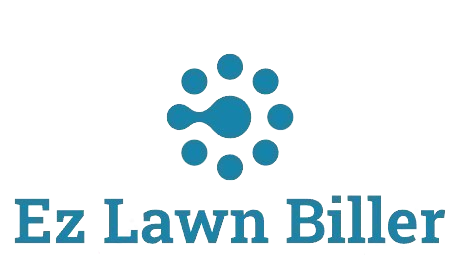Optimize your lawn service routes efficiently and effectively with this comprehensive guide, ensuring customer satisfaction and increased productivity.
The Ultimate Guide to Optimize Routes for Lawn Services
In the competitive world of lawn care services, optimizing routes is more than just a logistical challenge; it’s a critical factor that can enhance your operational efficiency, reduce costs, and improve client satisfaction. This guide will delve into the best practices and technologies available to ensure that your lawn service routes are optimized for success. From understanding the impact of route optimization to leveraging software tools, we’ll cover everything you need to know for streamlining your lawn service operations.
As a lawn care business owner, you may find yourself juggling multiple tasks, from managing client expectations to ensuring timely service delivery. Route optimization plays a pivotal role in this balancing act. It involves strategically planning the most efficient routes for your lawn care services, minimizing travel time, and maximizing productivity. As we progress, you’ll discover the tools and strategies at your disposal, along with practical tips to apply them effectively in your business.
In this guide, we will explore various aspects of route optimization, including the importance of understanding your service area, utilizing technology for planning and navigation, and implementing best practices that will set your lawn service apart from the competition. Let’s dig into these essential topics!
Understanding the Importance of Route Optimization
Route optimization is crucial for lawn care businesses for several reasons. First, it helps in reducing fuel consumption, which is a significant cost factor. According to the U.S. Department of Energy, optimizing routes can lead to a reduction of up to 20% in fuel costs. This not only saves money but also contributes to a more sustainable operation.
Second, efficient routing can improve customer satisfaction. Customers appreciate timely service, and by optimizing your routes, you can ensure that you arrive on schedule. This reliability builds trust and can lead to repeat business and referrals, which are vital for the growth of your lawn care business.
Lastly, route optimization can enhance employee productivity. When your crew spends less time driving and more time working on lawns, they can complete more jobs in a day. This increase in productivity can significantly boost your bottom line, allowing for growth and expansion.
Utilizing Technology for Route Planning
In today’s digital age, there are numerous tools available that can assist with route planning. One such tool is route optimization software, which can analyze your service area and suggest the best paths for your team. Software like this often takes into account factors such as traffic patterns, job priority, and the specific needs of your clients.
For instance, using platforms like Google Maps can help you visualize the best routes, but dedicated lawn care software can go a step further by automating the entire process. This ensures that you’re not only saving time but also minimizing errors that can occur with manual planning. Services like EZ Lawn Biller streamline this process, allowing for a more efficient workflow.
Moreover, mobile applications enable real-time updates and navigation for your team. With GPS tracking, you can monitor your workers’ locations and adjust routes as needed, ensuring that everyone is working efficiently. Additionally, these tools can provide insights into service times and fuel consumption, helping you make data-driven decisions for future planning.
Best Practices for Route Optimization
Incorporating best practices into your route optimization strategy can yield significant benefits. First, analyze your client list and categorize them based on proximity and service frequency. Grouping clients geographically helps in planning efficient routes, allowing your team to handle multiple jobs in close proximity.
Next, consider implementing a recurring schedule for regular clients. By establishing a consistent routine, you can plan routes around these ongoing services, further enhancing efficiency. For instance, if you have clients in similar neighborhoods who require weekly mowing, schedule them on the same day to minimize travel time.
Also, don’t overlook the importance of communication. Regularly update your clients on service schedules and any changes that may occur. This not only keeps them informed but also improves overall satisfaction. Using customer relationship management (CRM) software can assist in managing these communications effectively.
Evaluating and Adjusting Routes
Once you have implemented your optimized routes, it’s essential to evaluate their effectiveness regularly. Collect data on travel times, fuel consumption, and service completion rates to assess whether your routing strategy is working. This data can be invaluable for making necessary adjustments and improving efficiency further.
Consider conducting periodic reviews of your client base and service demands. As your business grows, you may acquire new clients in different areas, which may require you to rethink your routing strategies. Stay adaptable and open to changes that could enhance your services.
Lastly, solicit feedback from your employees. They are on the front lines and may have insights into traffic patterns or service challenges that could inform your route optimization efforts. Engaging your team in this process can lead to creative solutions and a more cohesive approach to operations.
The Role of EZ Lawn Biller in Route Optimization
As you focus on optimizing your routes for lawn services, integrating tools like EZ Lawn Biller can significantly enhance your capabilities. The platform not only streamlines billing and service tracking but also provides valuable insights into your operational efficiency.
With features such as automated service logging and invoicing, EZ Lawn Biller helps you maintain accurate records of your services. This data is crucial for analyzing which routes are most profitable and where adjustments may be necessary. It allows you to make informed decisions based on solid data rather than guesswork.
Additionally, the customizable interface of EZ Lawn Biller ensures that your invoices reflect your brand, promoting professionalism while saving time on administrative tasks. By automating these processes, you can devote more energy to optimizing your routes and improving customer relationships.
City-Specific Considerations for Route Optimization
When optimizing routes, it’s essential to consider the unique characteristics of the cities you serve. Take, for example, the bustling city of Los Angeles. With its sprawling urban landscape and notorious traffic, route optimization in this area requires careful planning. It may involve utilizing time-sensitive routing to avoid peak traffic hours and ensuring that your teams are well-versed in the best practices for maneuvering through busy streets.
In contrast, a city like Denver presents different challenges. The elevation and occasional weather changes can impact travel times significantly. Lawn care providers in Denver should account for these factors when scheduling appointments, as snow or rain can impact both service delivery and travel routes.
Similarly, a suburban area like Austin may offer unique opportunities for efficiency. With neighborhoods often clustered together, it’s easier to plan routes that reduce travel time between jobs. However, taking into account local events that may create traffic can also be beneficial in ensuring prompt service delivery.
Future Trends in Route Optimization for Lawn Care
As technology continues to evolve, the future of route optimization within the lawn care industry will likely see even more advancements. Artificial intelligence and machine learning are beginning to play a role in predictive routing, allowing businesses to anticipate service demands based on historical data and trends.
Additionally, the integration of drones for lawn assessments could change how lawn care companies plan their routes. Drones can provide real-time data on lawn conditions, allowing providers to prioritize services based on immediate needs rather than schedules alone.
Furthermore, as the push for sustainability grows, lawn care businesses may start to utilize electric vehicles or other eco-friendly options. Route optimization will play a critical role in ensuring that the energy consumption of these vehicles is kept to a minimum while still providing high-quality service.
Conclusion
In conclusion, optimizing routes for lawn services is a multifaceted process that can have a profound impact on your business’s efficiency and profitability. By understanding the importance of route optimization, leveraging technology, and implementing best practices, lawn care providers can significantly enhance their operations.
With tools like EZ Lawn Biller at your disposal, you can streamline your billing and service tracking, making route optimization even more effective. As you adapt to the various challenges presented by different locations and embrace future trends, you’ll position your lawn care business for sustained success.
Don’t wait any longer—start optimizing your routes today, and watch your lawn care business thrive! For more information on how to manage your billing and services efficiently, consider exploring [Lawn Biller Software](https://ezlawnbiller.com/), and transform your operations today.




